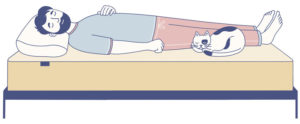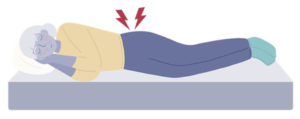Living with chronic pain can disrupt many aspects of daily life – especially the ability to get a good night’s sleep. To stop a lack of rest from resulting in a bad cycle that worsens the daily pain, we’re here to provide some basic steps to mitigating the effects of fibromyalgia at night.
First we’ll explain a little bit about fibromyalgia and how it affects your sleep, then we’ll get into tips for how you can get a better and more comfortable night’s rest. If you’re looking to take a more serious step in mitigating your pain, you can also check out our medically-approved list of the best mattresses for fibromyalgia.
What is Fibromyalgia?
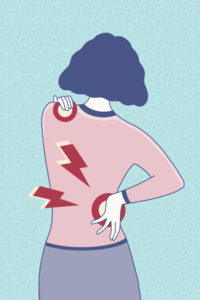 Fibromyalgia is a chronic medical condition that’s characterized by widespread musculoskeletal pain. Those who struggle with fibromyalgia may also experience recurring fatigue, mood disorders, memory problems, and bouts of insomnia. Current research suggests this condition impacts the way the brain and spinal cord process painful and non-painful signals, thereby exacerbating painful sensations.
Fibromyalgia is a chronic medical condition that’s characterized by widespread musculoskeletal pain. Those who struggle with fibromyalgia may also experience recurring fatigue, mood disorders, memory problems, and bouts of insomnia. Current research suggests this condition impacts the way the brain and spinal cord process painful and non-painful signals, thereby exacerbating painful sensations.
The symptoms of fibromyalgia often occur as a response to trauma. Because of this, it is often linked to veterans. Sometimes fibromyalgia can also be triggered by a surgery, a prolonged illness, or any life event that causes immense psychological turmoil. With that said, the onset of this condition is often rather mysterious: Many people experience worsening fibromyalgia symptoms over time, and are unable to identify any single, triggering event.
Who Is Effected?
In the U.S., fibromyalgia affects an estimated 4 million adults, or around 2% of the country’s population. Women are twice as likely to develop this condition as men. Many people find that the pain, tiredness, and sleep issues that are associated with fibromyalgia significantly interfere with daily life.
Women are more likely than men to get fibromyalgia, and those who experience this condition are at higher risk for irritable bowel disease, tension headaches, TMJ, and depression.
Right now, there is no known cure for fibromyalgia. With that said, the symptoms can be controlled with medications, stress-reducing activities, regular exercise, and different kinds of relaxation.
How Fibromyalgia Affects Sleep
Fibromyalgia and sleep are closely linked, and research consistently finds that poor-quality sleep is a common symptom of fibromyalgia.
Many people with fibromyalgia find that they wake up tired even if they have obtained enough hours of sleep. That’s because fibromyalgia might prevent the deep sleep stages that are required for feeling restored and refreshed.
One study of 600 fibromyalgia patients found that 96% of respondents qualified as “problem sleepers.” Meanwhile, a meta-analysis of 16 studies found that the pain of fibromyalgia is linked with reduced sleep quality, reduced sleep duration, increased sleep disturbance, trouble falling asleep, and increased wake ups during the night.
Fibromyalgia sometimes co-occurs with sleep disorders such as insomnia, Restless Legs Syndrome, and sleep apnea. These disorders interfere with quality sleep on their own, and when they’re combined with fibromyalgia, your sleep can suffer even more greatly.
Fibromyalgia and Restless Leg Syndrome
Fibromyalgia is connected to a wide range of ancillary conditions, including restless leg syndrome (RLS). RLS is a condition that causes strong, often uncontrollable urges to move the feet and the legs.
Those who experience RLS often have an acute feeling of bodily discomfort, and the condition can be especially severe at bedtime. About a third of all fibromyalgia patients also experience the symptoms of RLS, according to a study reported by WebMD.
This overlap is significant, because RLS symptoms tend to be the worst at night, making it challenging to get comfortable and fall asleep. These sleep disruptions may in turn contribute to more severe fibromyalgia pain.
Fibromyalgia and Insomnia
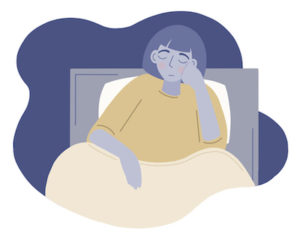 Among fibromyalgia patients, insomnia is an all-too-common experience. In fact, insomnia is listed as one of the primary diagnostic criteria that physicians use to diagnose fibromyalgia.
Among fibromyalgia patients, insomnia is an all-too-common experience. In fact, insomnia is listed as one of the primary diagnostic criteria that physicians use to diagnose fibromyalgia.
So what is insomnia? This most common of sleep disorders refers to difficulty falling asleep at night, or getting enough sleep to feel truly well-rested. Those who have insomnia may need half an hour or more to fall asleep, or find themselves unable to sleep for more than five or six hours a night. If you have these symptoms persistently, three or more nights a week, then you likely qualify as an insomniac.
The pain caused by fibromyalgia may make it even more difficult to fall to sleep each night. The good news is, a few simple lifestyle changes can curb the effects of insomnia, and hopefully create the right situation to get some much-needed rest.
Fibromyalgia and Stress
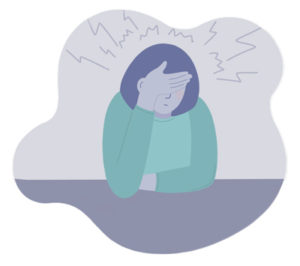 All of us have stress, whether due to factors in our personal lives, issues in our professional lives, or the uncertainty of the broader world. Those who live with a chronic health condition may have additional stress, caused by constant concerns over managing symptoms. The cruel irony here is that stress weakens the body and makes it more vulnerable to the symptoms of fibromyalgia.
All of us have stress, whether due to factors in our personal lives, issues in our professional lives, or the uncertainty of the broader world. Those who live with a chronic health condition may have additional stress, caused by constant concerns over managing symptoms. The cruel irony here is that stress weakens the body and makes it more vulnerable to the symptoms of fibromyalgia.
And, stress can make it harder to fall asleep at night. Concerns about work, about money, or about your health can keep your mind active long past bedtime, either making it impossible to fall asleep or simply diminishing the restfulness of your sleep.
Best Sleeping Position For Fibromyalgia
Back Sleeping
Sleeping on your back is often the most recommended sleeping position, and this position can be very comfortable for people with fibromyalgia.
Back sleepers will want a firmer mattress and a thinner pillow to support proper alignment. If you are one of the people with fibromyalgia who also has sleep apnea, you may want to avoid sleeping on your back to avoid exacerbating that condition or use a wedge pillow to incline the upper half of your body.
Worst Sleeping Positions For Fibromyalgia
Your sleeping position could potentially be exacerbating your fibromyalgia pain. Read about how stomach and side sleeping can negatively affect you below.
Stomach Sleeping
Stomach sleeping is generally the least recommended sleeping position. This position puts a lot of strain on the neck and lower back, especially if you don’t have a supportive mattress or the right pillow. Stomach sleepers may want to consider switching sleeping position by training themselves to sleep on their back.
If you continue stomach sleeping, be sure you have a firmer and supportive mattress that you don’t sink too far into and a thin pillow so you don’t cause extra strain on your neck. Take a look at our lists of the best mattresses for stomach sleepers and the best pillows for stomach sleepers to be sure you get the proper support.
Side Sleeping
Generally, side sleeping is not recommended for people who have any type of pain. Sleeping on your side can cause pressure and pain buildups in the knees, hips, and shoulders in particular.
However, if you sleep on a good mattress that evenly distributes your body weight across the surface, like memory foam mattresses tend to do, then sleeping on your side may actually be comfortable and help relieve your pain. Just be sure you have a pressure-relieving mattress that contours to your body to maintain neutral spine alignment and an even distribution of body weight.
Tips for Sleeping With Fibromyalgia
Now we’ll share some tips for sleeping with fibromyalgia-related sleep problems including Restless Leg Syndrome (RLS), insomnia, and stress.
Tips for Dealing with Fibromyalgia and RLS
Exercise during the day. Regular, moderate exercise has been linked with improvement in RLS symptoms. However, it’s important not to push too hard or to work out too late in the day. Doing so may actually cause RLS symptoms to get worse.
Calf and thigh stretches before bed. Another way to reduce the symptoms of RLS is by incorporating some light stretches into your bedtime routine. The most effective stretches are those that apply tension to the calves or the thighs. Consider front thigh stretches, ankle rotations, or seated calf stretches.
Relieve muscular tension with a warm bath or massage. Finally, a soothing massage or warm bath can help muscular tension to dissipate. For best results, combine these methods. Draw a warm bath to get the muscles loose, then lightly massage your legs from top to bottom.
Tips for Dealing with Fibromyalgia and Insomnia
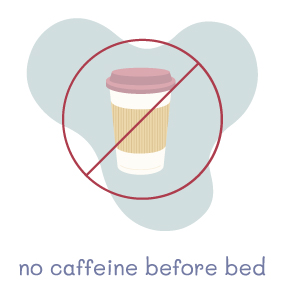 Avoid caffeine and alcohol at night. Caffeine is often used as a tool for “waking up” in the morning, so it should go without saying that consuming it before bed can be problematic. Ideally, those with insomnia should cease consuming any caffeine after lunchtime. And while alcohol may sometimes make you feel drowsy, studies show that it actually produces a lower quality of sleep, especially in the second half of the night.
Avoid caffeine and alcohol at night. Caffeine is often used as a tool for “waking up” in the morning, so it should go without saying that consuming it before bed can be problematic. Ideally, those with insomnia should cease consuming any caffeine after lunchtime. And while alcohol may sometimes make you feel drowsy, studies show that it actually produces a lower quality of sleep, especially in the second half of the night.
Limit napping during the day. The chronic fatigue caused by fibromyalgia can make napping seem irresistible. With that said, sleeping during the day may mean your body and mind are ill-prepared to sleep at night. Try to avoid daytime naps as much as possible.
Consider trying Cognitive Behavioral Therapy. Trained CBT providers can create treatment sessions targeted toward remedying insomnia, specifically by helping you break free from some of your subconscious thought patterns that make sleep elusive. In a CBT session, your therapist will help you examine your underlying thoughts and assumptions regarding sleep. Over several sessions, your therapist can help you reframe your thoughts in a way that is more conducive to sleep.
Keep a sleep journal. Another tip? Keep a written record of when you go to bed each night, and roughly how long it takes you to fall asleep. Also write down information about daily exercise, food or drinking habits, pre-bedtime activities, and any naps you take during the day. A sleep journal may help you identify some barriers that are preventing you from getting a good night’s rest.
Tips for Dealing with Fibromyalgia and Stress
Create the right sleep environment. Set the temperature in your bedroom to a cool, comfortable level. Remove clutter from the room; a messy room tends to breed stress. Eliminate any light, including blue light. And, be sure you have a supportive and comfortable mattress.
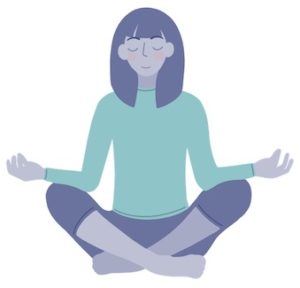 Try yoga and nighttime meditation. Yoga is a good way to naturally clear your mind and relieve tension from your muscles. Meditation may also help you discard some of the concerns you’ve been carrying with you, and to get into a more tranquil headspace before bed. Yoga videos and meditation apps are simple, inexpensive solutions.
Try yoga and nighttime meditation. Yoga is a good way to naturally clear your mind and relieve tension from your muscles. Meditation may also help you discard some of the concerns you’ve been carrying with you, and to get into a more tranquil headspace before bed. Yoga videos and meditation apps are simple, inexpensive solutions.
Create a soothing bedtime routine. Avoid working or studying right up until bedtime. Instead, set aside your work (and turn off electronic devices) an hour or two before you hit the sack. Develop a soothing, pleasurable bedtime routine. Consider reading, listening to relaxing music, lighting some candles, soaking in the tub, or some of the yoga and meditation options mentioned above.
Use a weighted blanket. While weighted blankets aren’t for everyone, some people find them to have a soothing, therapeutic effect. If you prefer the feeling of being snuggled to bed each night, a weighted blanket might offer you that sense of security, and a break from your stress.
Conclusion
Fibromyalgia can lead to a lot of daily disruptions… and all too often, those disruptions extend into nighttime. If your experience with fibromyalgia includes diminished sleep, please know that solutions are out there, including practical lifestyle changes that can help you manage your symptoms and comorbidities and ultimately get better, more healing rest.

